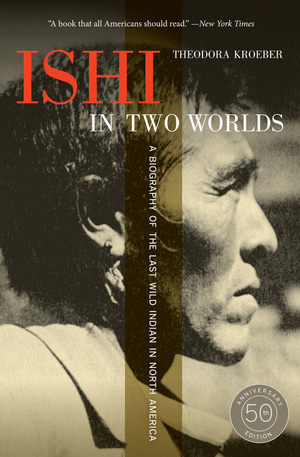On December 14th, 1915, Red Fox James, a member of the Blackfeet Nation of Montana, arrived in Washington DC, concluding a yearlong cross country trip by horseback. Red Fox James had spent the past year traveling from state to state, collecting endorsements from twenty-four state legislatures in support of establishing a national day of recognition for American Indians.
Arriving at the White House to deliver the endorsements to President Woodrow Wilson, it would take another seventy-five years until the actions of Red Fox James and countless other activists would result in the establishment of “National American Indian Heritage Month” in 1990.
Celebrated every November since, National Native American Heritage Month is observed in honor of “the significant contributions the first Americans made to the establishment and growth of the U.S.”
Throughout its 125-plus year history, UC Press is proud to have published many titles detailing the history, art, religion, literature, and more of America’s First Peoples, specifically those of Californian origin. Collected here is a handful of this publishing, both recent and classic. Please join us as we celebrate this vibrantly historic month.
More information about National Native American Heritage Month and its history can be read at its official website.
When I Remember I See Red: American Indian Art and Activism in California
edited by Frank LaPena and Mark Dean Johnson, with a Foreword by the Honorable Edmund Jerry G. Brown Jr.
“From [Frank] LaPena’s lithograph ‘History of California Indians’ to Linda Aguilar’s basket decorated with shells, bingo markers, and cut-up credit cards, the images challenge stereotypes in astonishing ways.”—Alta: The Journal of California
When I Remember I See Red: American Indian Art and Activism in California features contemporary art by First Californians and other American Indian artists with strong ties to the state. Taking cues from their forebears, members of the younger generation often combine art and activism, embracing issues of identity, politics, and injustice to produce innovative and enlightening work. The exhibition transcends borders, with some California artists working outside the state, and several artists of non-California tribes living and creating within its boundaries. Diverse cultural influences coupled with the extraordinary dissemination of images made possible by technology have led to new forms of expression, making When I Remember I See Red a richly layered experience.
Published in association with the Crocker Art Museum in Sacramento, where the exhibition is on view through late January. Afterwards it will travel to the Institute of American Indian Art in Santa Fe, NM, followed by the Autry Museum of the American West in Los Angeles.

A Biography of the Last Wild Indian in North America
by Theodora Kroeber

Native American Knowledge and the Management of California’s Natural Resources
by M. Kat Anderson
“A book that all Americans should read.”—New York Times on Ishi in Two Worlds
“Kat Anderson writes beautifully, conveying awareness, insight, and wisdom, without preaching or posturing. A remarkable compendium of practical knowledge, her book includes many reproductions of rare maps and photographs of native people going about their daily lives.”—Pacific Horticulture on Tending the Wild

by Kerry Driscoll

The Complete Reader’s Edition
by Scott O’Dell
“Nonspecialists will appreciate Driscoll’s clear and lively prose, and specialists will value her impeccable research.”—CHOICE on Mark Twain among the Indians
“It is hard to think of a work of children’s literature better served by a new critical edition than Scott O’Dell’s Island of the Blue Dolphins. It is a wonderful combination of thought and magic.”—David Treuer, author of Rez Life: An Indian’s Journey through Reservation Life on Island of the Blue Dolphins

Huston Smith in Conversation with Native Americans on Religious Freedom
by Huston Smith

Weaving the Dream
by Greg Sarris
“An engaging discussion of the differences between Western and Native American approaches to worship and morality, and a call for American society to wake up to its destructive ways.”—Dallas Morning News on A Seat at the Table
“Wonderful, and urgently needed in these days of confusion over Native American identity and spirituality. . . . Vibrant testimony to the survival of American Indians and the power of the old spirits.”—Leslie Marmon Silko on Weaving the Dream


